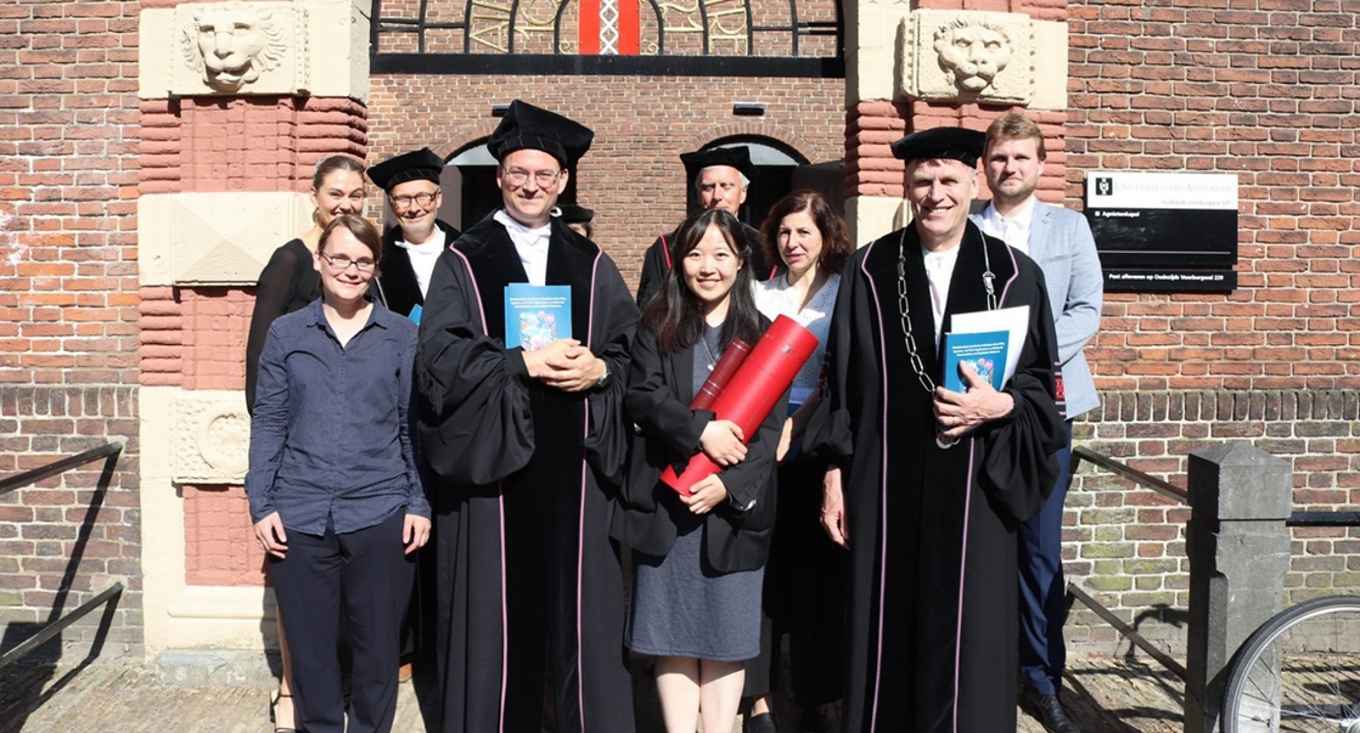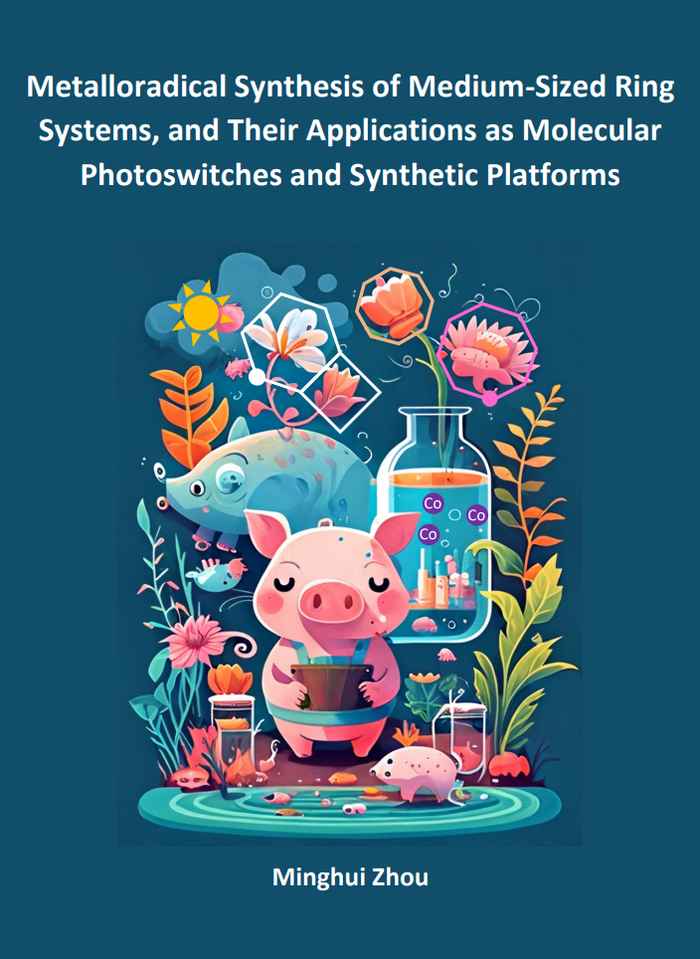Minghui Zhou obtains doctorate cum laude
20 June 2023

The relevance of Minghui Zhou’s research lies in the sustainable synthesis of new medicines and other bio-active compounds. Such synthesis requires catalytic methods that rely on abundant base metals instead of non-abundant noble metals. This is very challenging, in particular when it comes to synthetic ring-closure strategies via C-C bond formation, that are at the heart of many synthetic procedures. Introducing base metals here leads to hyper-reactive radical mechanisms. Studying these requires the use of uncommon analysis techniques and non-traditional computational methods.
Zhou beautifully tackled all these challenges in a highly efficient and creative manner. In her thesis she describes the effective synthesis of valuable medium-sized ring structures via catalytic radical-type reactions that depend on cobalt-catalyzed radical-type carbene transfer. She also explored the application of the synthesised compounds in organic synthesis as well as their application as molecular switches. To arrive at these striking results, Zhou had to acquire high-level expertise in the disparate sub-fields of synthetic, spectroscopic and computational chemistry. She has shown to be a tremendously versatile researcher, quickly adopting new techniques, knowledge and insights. Her PhD research has already led to several high impact papers.
Abstract of the thesis

This dissertation is centered around new synthetic applications of metalloradical-carbene-transfer strategies in the synthesis of medium-sized rings, and the utilization of these new cyclic products as molecular photoswitches and synthetic platforms. In the first part of this dissertation, cobalt-based metalloradical strategies were successfully exploited in the synthesis of medium-sized ring compounds, and three types of novel 8-membered cyclic structures were developed: dibenzocyclooctenes, monobenzocyclooctadienes, and 1H-2-benzo[c]oxocins. Mechanistic investigations indicated that all these transformations proceed via cobalt(III)-carbene radicals as intermediates, which have been supported by experimental observations, computational studies, and spin trapping experiments.
The second part of the thesis exhibits our findings on the employment of these 8-membered cyclic molecules. A novel T-type molecular photoswitch based on the reversible cyclization of 1H-2-benzo[c]oxocins to dihydro-4H-cyclobuta[c]isochromenes has been developed, and their switching behavior was investigated with spectroscopic studies and photophysical investigations. Alongside the photo-responsive behavior of 1H-2-benzo[c]oxocins, these 8-membered heterocycles can easily convert to other bioactive structures, including dihydronaphthalenes and 1,3-dihydroisobenzofuran-3-oxobutanoates, which are important substructures found in several bioactive molecules/enzymes that are difficult to access otherwise.
M. Zhou: Metalloradical synthesis of medium-sized ring systems, and their applications as molecular photoswitches and synthetic platforms. Selected chapters can be downloaded at the UvA Digital Academic Repository.